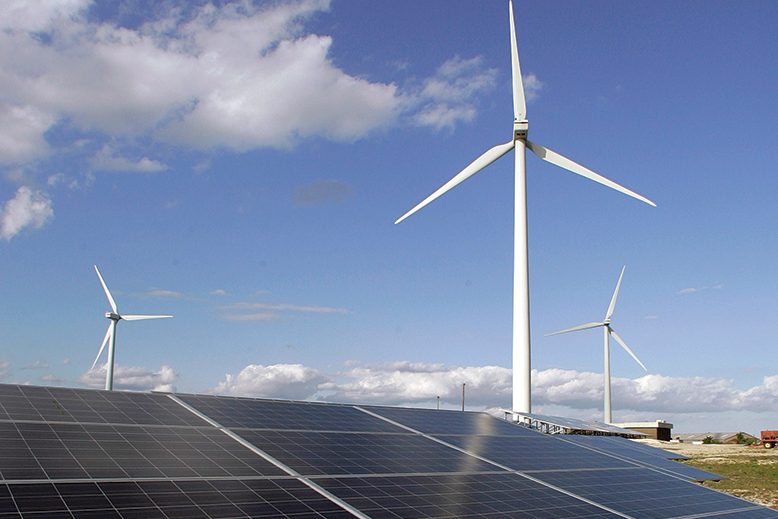
If you’ve driven into Atlantic City in recent years, you’ve been awed by the five massive turbines of America’s first coastal wind farm. The installation produces approximately 19 million kilowatt-hours of emission-free electricity per year. That’s enough energy to power more than 2,000 homes.
If this much renewable energy can be harnessed on coastal lands, imagine the possibilities if you could take those wind farms offshore, where sea breezes are magnified. That’s what Governor Phil Murphy had in mind last year when he signed an executive order calling on the state to create 3,500 megawatts of offshore wind energy by 2030, with the longer vision of transforming New Jersey into a 100 percent clean energy state by 2050.
To get a better understanding of offshore wind, a team of researchers at Rutgers University conducted a study of factors that would affect wind-based energy production.
“It’s important that developers take into consideration local effects, like sea breezes, to make sure they can optimize production,” says one of the Rutgers researchers, Dr. Joseph F. Brodie, director, Atmospheric Research, Center for Ocean Observing Leadership, at the university.
The Rutgers study, published last September, found that not only do sea breezes travel three times farther offshore than onshore, but that the breezes are stronger during upwelling conditions, most common in the summer and fall, which is when water in deeper levels of the ocean rise to the surface. Thanks to the study, developers now know which months to expect the greatest potential wind energy.
Last September, the state Board of Public Utilities (BPU) starting taking bids from developers for the first 1,100 megawatts of offshore wind production. The winning bids will be announced in June. “Construction would be expected to start in 2022-2023, with commercial operations expected to begin in 2024-2026,” says BPU President Joseph L. Fiordaliso. “Projects will be located in one of the four federally designated offshore wind lease areas off the coast of New Jersey.”
The offshore wind farms, which are expected to produce more energy than those onshore, will transmit power to shore by undersea radial transmission cables, connecting onshore at locations to be determined. The planned initial 1,100 megawatts of installed capacity will be able to generate an estimated 4.8 million megawatt-hours of energy annually. This is enough to serve approximately 500,000 New Jersey homes.
The offshore wind farms are expected to bring jobs to New Jersey, while offering cost-effective, renewable energy. The BPU says a two-year research project led by the state Department of Environmental Protection “showed minimal environmental impact would occur” at proposed offshore sites. Additional studies looked at the impact on commercial and recreational fishing. “The federal Bureau of Ocean Energy Management (BOEM) thoroughly reviewed and considered these potential impacts,” says Fiordaliso. “In addition, developers are required to complete extensive site-evaluation studies and construction and operations plans, which must be reviewed and approved by BOEM in order for any project to proceed.”
Further, the NJ DEP will monitor any environmental impacts in state waters and onshore. According to Dr. Josh Kohut, associate professor, Center for Ocean Observing Leadership at Rutgers, who worked on the study, “Frequent and open communication between all of the groups involved, and appropriate collaborative research, ensure decision-makers have access to the most relevant information.”
Editor’s note: Small portions of this article have been updated for clarity.



